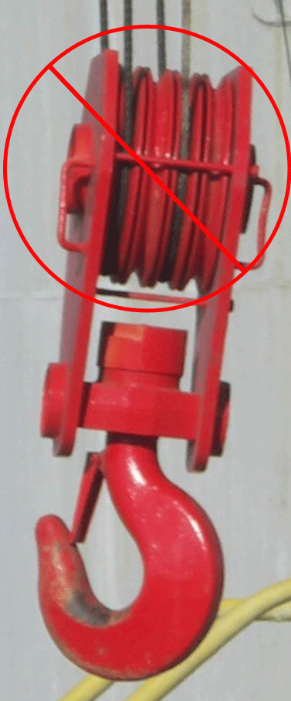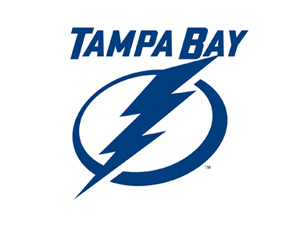*Tampa............ July 6 - 9
Baton Rouge... Aug 17 - 19
Houston......June 25 - 26
Tampa......... Aug 10 - 11
Houston............. June 15
Tampa.............. July 10
Houston.........June 17 - 18
*Tampa.............. Aug 5 - 7
Houston..................June 16
Tampa................... Aug 4
Houston.......June 29 - 30 *Tampa...........Aug 12 - 14*Lafayette..............Sept 28 - 30 Rigging Gear InspectorHouston.........June 22 - 24 Morgan City.....Sept 16 - 18 *Tampa......... Aug 4 - 5
Tampa.......... August 3
* HANDS ON TRAINING
**TRAIN-THE-TRAINER
To Inquire or Enroll
Contact us
800-521-7669
|
|
Click HERE to view
Crane Tech's
Product Catalog
|
|
Scheduled Training and On-Site Available
Click here to visit our website. Call us today to inquire about or on-site services and seminar training. 800-521-7669
|
|
Enroll 2 & 3rd is Free!
Did you know that when you enroll two students in select Crane Tech programs the third student is free? Enroll two participants in same class, scheduled on the same dates, from the same company and the third tuition is free. That's 33% savings! Free participants wanting Train-the-Trainer status with their free enrollment only pay Train-the-Trainer fees.
|
|

Crane Tech is a Proud NCCCO Platinum Sponsor
Crane Tech fully endorses the national certification program offered by the National Commission for the Certification of Crane Operators (NCCCO), and will prepare candidates for the CCO tests.
|
Follow Crane Tech on Social Media
|
Crane Tech, LLC
1215 Millennium Parkway
Brandon, FL 33511
Phone: (813) 248-4800
|
|
 From Bo's Desk: From Bo's Desk:
As Seen on TV
Don't Try This At Work
I was watching television recently and a show, which shall remain nameless, came on detailing how things were manufactured. While multi-tasking on my mobile device, which shall also remain nameless, the show started planning a lift using a forklift?!?! Of course this got my attention. What I saw was a familiar improper use of slings on forklift tines, but this time it was on national TV for everyone to see. I immediately snapped a few pictures because it's one of those incorrect sling uses that is wrong on many levels. I thought I would share this with our readers so you have an opportunity to see this through my eyes. Maybe I can just get one person (hopefully several) to recognize this type of rigging as being extremely dangerous.
 And there is no better day to do this than the National Forklift Safety Day, which just happens to be today. And there is no better day to do this than the National Forklift Safety Day, which just happens to be today.
Take a close look at the picture. What do you see?
Any deficiencies or concerns?

Study it for a few more moments, now here's what I see: - The Whole Scenario: I don't know of a single forklift manufacturer who would permit lifting directly from the fork tines in this manner. There have been so many sling failures and so many lawsuits that all the manufacturers recognize this as an extremely high risk and a known job site hazard. Simply put, NEVER SLING A LOAD FROM A FORK TINE.
- The Forks: Again, NEVER lift directly from the forks, but look at what's happening when slinging from a single fork. If you really feel the need to permanently bend one fork then this is a good way to get the job done. Unfortunately, the forks become misaligned and create future problems. I know of cases where damaged (bent) forks were the cause of a forklift operator inadvertently pushing a pallet of goods off the opposite side of an elevated storage area.
- The Sling: While this synthetic sling may be a fine choice to rig the cylinder in another lift situation, in this circumstance the sling is subject to being cut by the metal edge of the fork. There is no best case here...if the sling doesn't get cut and immediately fail, it can be damaged, setting the users up for a failure in the future. I don't even want to give an impression of condoning the use of slings to rig under forks, but understanding the need for sling protection often comes as a result sudden and catastrophic sling failure.
- The C-Clamp: Does this really need to be addressed? While I could commend them for trying to stop the sling from coming off the end, if the forklift tilted the forks down and the sling began to slide do we really believe this c-clamp is going to help anything? That kind of force could easily cause the sling to be sliced and fail on its way to the c-clamp.
Now, I am not saying you cannot sling loads from forklifts, you can. But, you must use a device that attaches to the forks (that is Forks with an 'S') to attach the slings. Some of these are made to resemble a boom that can add reach, some just slip over the forks and do not add any reach. All of them must be a device the forklift manufacturer approves and when they are used they must have a restraint that ties them back to the forklift mast.
Now, due to space considerations and brevity, I will stop here, but this story unfortunately doesn't stop here. It goes on every day in the industrial arena and anything you can do at your local safety meetings or company wide bulletins to get the word out can help save someone's legs, or head, or life. I'd like to hear what you think of this situation, please feel free to e-mail me your thoughts or feedback and we will share with our readers your comments in a future newsletter. Also we'd like for you to participate in our poll below to give us better insight into your understanding of forklift attachments. Here's to a Safe Day! --Bo Collier, President
Remember, if you ever need advice about how to properly use a forklift, feel free to call us to talk through the situation. We offer a Forklift Train-The-Trainer class so your training team can educate others on the proper use of forklifts. After all, Safety through Education is more than our tagline, it is our guiding principle!
|
Tell Us...Did You Know?
Do you know that manufacturers make specific attachments for forklifts that will allow you to properly rig and lift using the machine?
- Yes, I have used these attachments before.
- Yes, but I have never used one of these attachments.
- No, I did not know these attachments were made.
Click Here to Take the Survey
|
|
Register Today!
Space is Limited for these Upcoming Classes
Crane Tech's Qualified Rigger Level 1 program provides training necessary to meet the regulationsof OSHA §1926 Subpart CC as a basic level rigger. Instruction includes use of slings, rigging hardware, hooks, use of below-the-hook lifting devices, pre-use inspections, center of gravity, and more. Click to register. Click to register for Train-the-Trainer.
This program teaches the basics of working as a signal person, including when signals are required, types of signals used and the proper methods, the basic understanding of crane dynamics and more. Meets OSHA §1926 Subpart CC requirements. Click to register. Click to register for Train-the-Trainer.
Qualified Rigger Level 2 - June 17-18 in Houston
Provides the training necessary for an employer to designate a person as qualified to work as a Level 2 rigger. Level 2 riggers are trained to perform rigging calculations, determine the correct slings and rigging gear for safe load handling and to direct a Level 1 rigger. Click to register.
 Mobile Crane Operator Professional Operator Development July 6-24 in Tampa Mobile Crane Operator Professional Operator Development July 6-24 in Tampa
For those who need to learn the dynamics of crane operations or need seat time learning to operate mobile crane, we strongly recommend attending our Mobile Crane Professional Operator Development course. We spend three weeks of classroom and hands-on training in our Tampa Training Center that culminates with the NCCCO Certification testing, allowing individuals with little to no experience to graduate as an NCCCO Certified Mobile Crane Operator. Click to register.
|
What Our Students Say...
"I just completed the Aerial Lift Train-theTrainer class and I wanted to let you know that our instructor did a wonderful job. He would take his time, answer any questions I had, and find out answers to questions that were not directly about the subject. I have been to many, many, training classes and I have to say, your one of the best instructors I have ever had."
|
 Crane Tech
Tip of the Week
Make sure to follow
manufacturer instructions
when reeving a load block.
Reeve to the outside sheaves first to maintain balance and stability.
|
 Let's Go Bolts!
|
|